NZXT Phantom 530 Case Review
by Dustin Sklavos on July 18, 2013 12:00 PM EST- Posted in
- Cases/Cooling/PSUs
- NZXT
- ATX
Noise and Thermal Testing
However I might feel about NZXT sticking with the "tried and true" for the Phantom 530's design, there is at least one important benefit: it performs. Despite only having a 200mm intake and 140mm exhaust, test results for the Phantom 530 proved to be extremely positive, with the conventional ATX design actually giving Corsair's Carbide Air 540 a run for its money.
The Phantom 530 was tested at all three fan settings.
Ambient temperature was a pretty steady 22C throughout testing. Oh California, you and your wacky weather patterns.
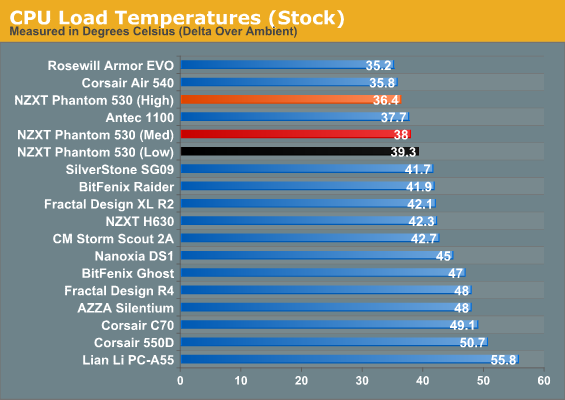
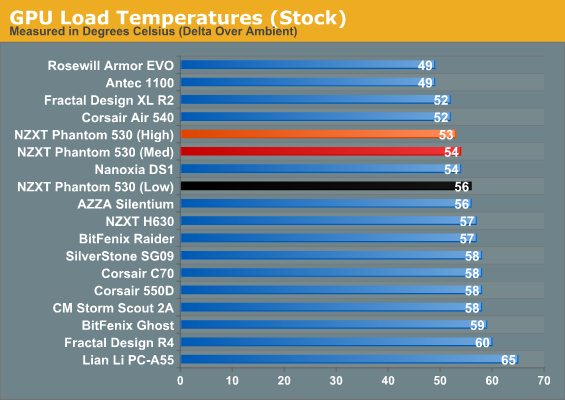
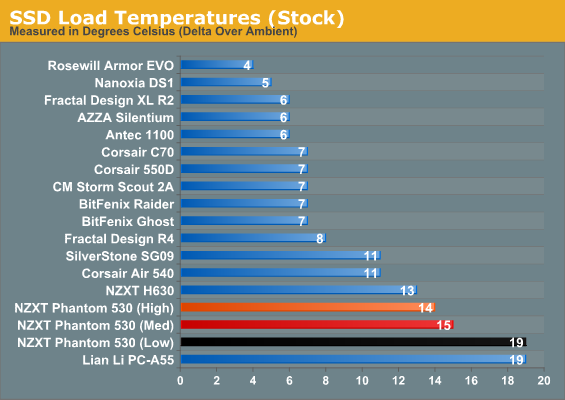
The SSD temperatures give me a little bit of pause, but keep in mind that you can simply opt to use one of the standard drive sleds instead of the special one located behind the motherboard if you're concerned your SSD is running too hot. Otherwise, cooling performance in our stock configuration is actually stellar.
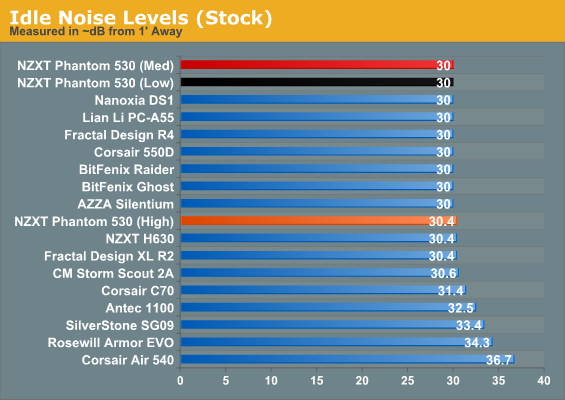
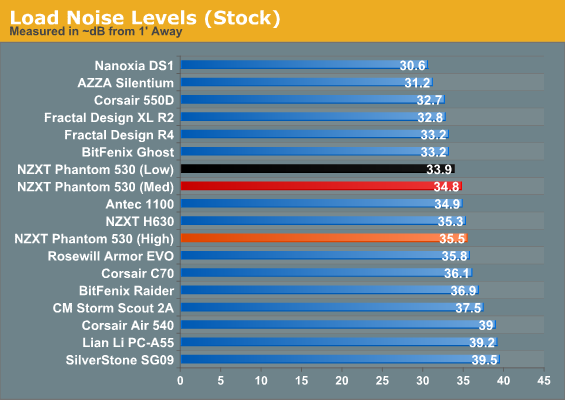
Noise levels aren't ideal, but they're at least competitive, especially when the Phantom 530's performance is taken into account.
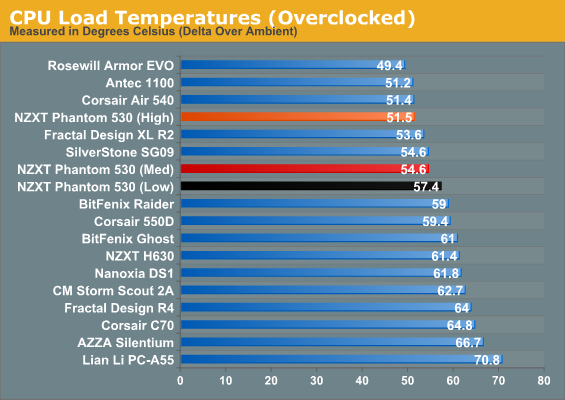
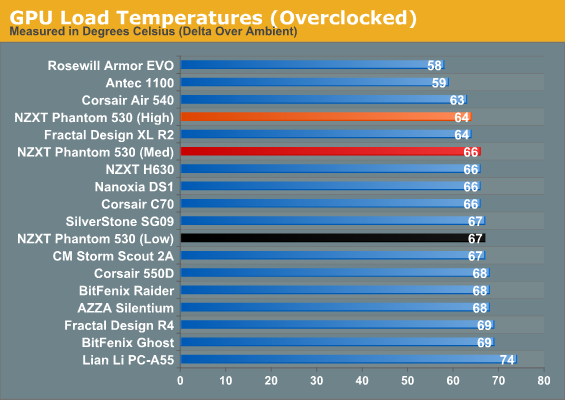
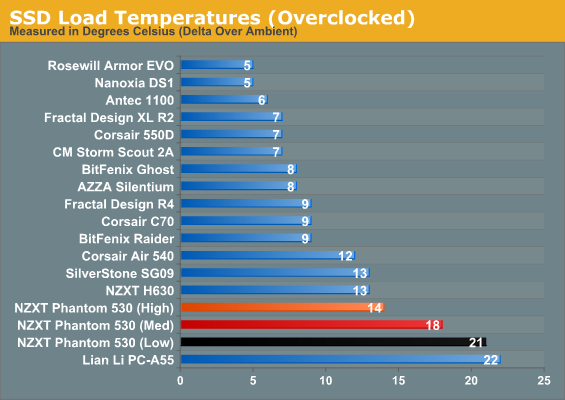
Overclocking the testbed causes the Phantom 530 to lose a little bit of ground, but not much. It's still one of the best air cooling cases in its class for pure thermal performance.
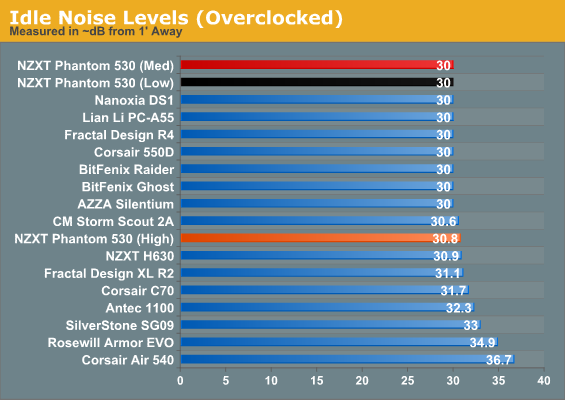
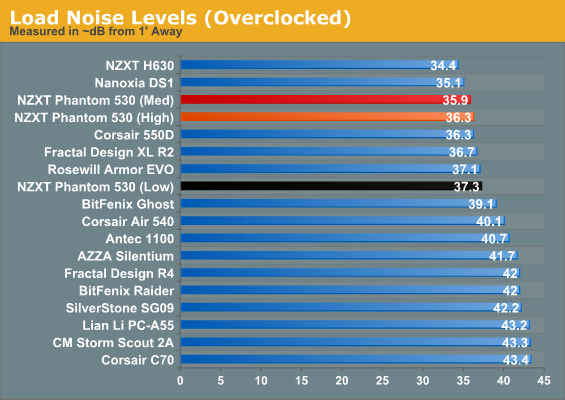
The Phantom 530 also turns out to be one of the most acoustically efficient cases in its class, too. Moving up to the overclocked testbed results in continued solid thermal performance, but other cases now have to run louder to really compete with it.

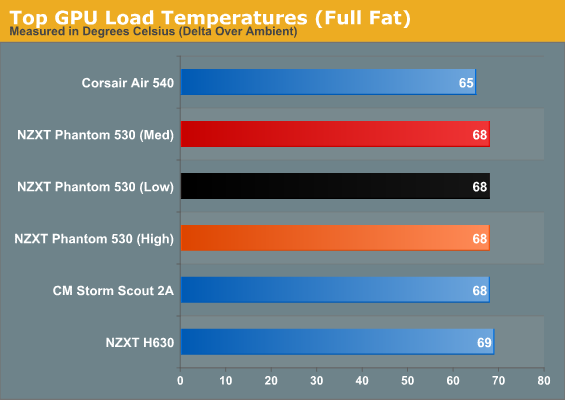
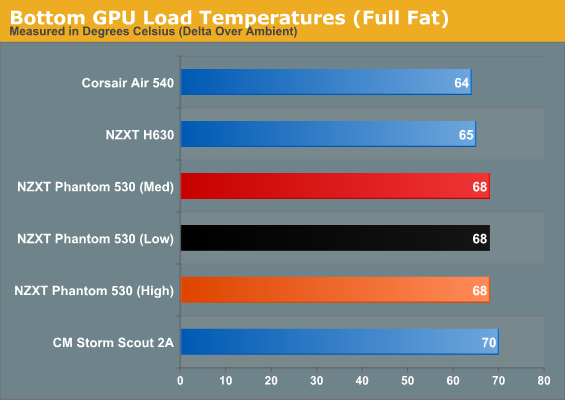
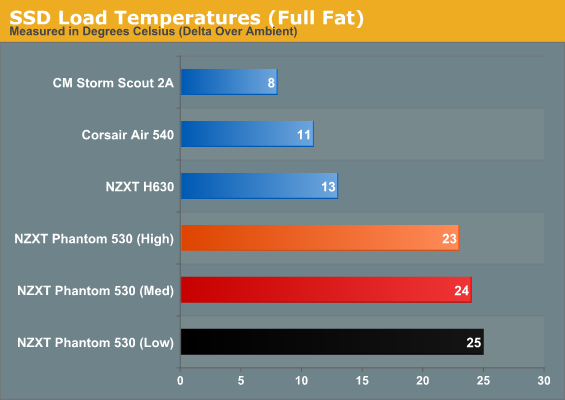
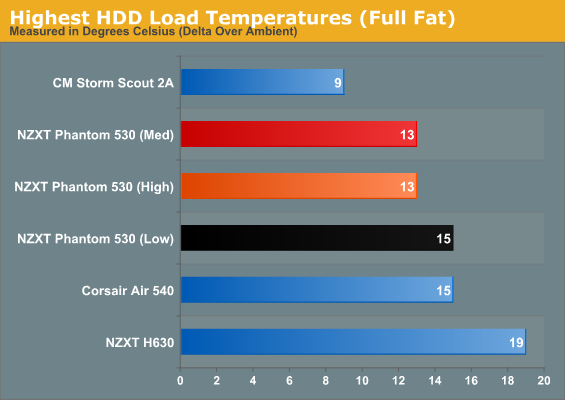
The full fat testbed essentially continues to be a stronghold for the NZXT Phantom 530. Any way you slice it, the case is going to be one of the best options available in its class.
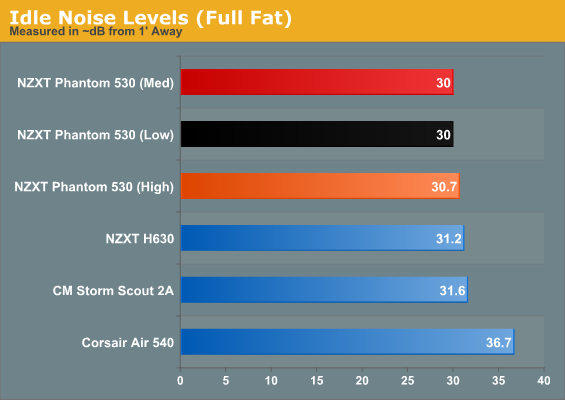
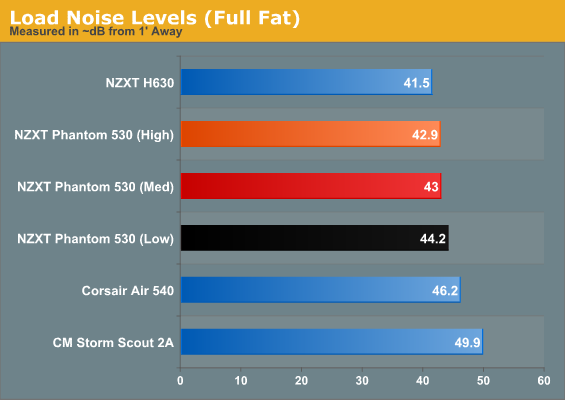
Noise levels are excellent for the performance. Our full fat testbed is a noisy beast, but the Phantom 530 is able to keep it to at least a comparatively low volume.










20 Comments
View All Comments
Jumpman23 - Thursday, July 18, 2013 - link
I had my eye on this case and seems to be everything the 630 is but shrunk. I really like the front door on the 530 over all the other Phantoms. It just doesn't look as flat. My only complaint is that the side fan mount just looks odd there especially without a fan.crimson117 - Thursday, July 18, 2013 - link
> the fan controller goes a long way towards making things easier. NZXT opts to use a 4-pin molex power connector for it to ensure enough power is available.I was more than a little peeved that I need to plug an entire molex cable into my modular power supply /just/ to power the fan controller.
crimson117 - Thursday, July 18, 2013 - link
on my Phantom 630, that it.Dustin Sklavos - Thursday, July 18, 2013 - link
The problem as I understand it is that the SATA power lead isn't rated for as high a wattage as the molex is, so the molex becomes a necessary evil.Death666Angel - Friday, July 19, 2013 - link
The SATA power connector has 3 12V pins (and 3 5V and 3 3.3V ones). Each pin is able to deliver 1.5A as per the wikipedia entry and 2 other sites I found via google. That is 54W for the SATA power cable for the 12V rail only (22.5W and 14.85W for the 5V/3.3V rails). Numbers for the Molex/4-pin connector are bit hard to come by. The most common number is 13A maximum (rated by Molex for the connector) and 5A for PC use. So it is between 60W and 156W from the 12V rail (25W/55W for the 5V rail). So, just comparing the 12V rails (which will likely be the only ones used), you have a power delivery advantage of the 4-pin Molex connector of ~6W to 102W. Considering that even the 6 pin PCIe connector is only rated for 75W and that is with more ground and 12V connections, I doubt anything above 5A is save or reasonable. So the actual difference as far as I can tell, is fairly small, with some variation possible. However, apart from some Delta fans, I doubt anything plugged into that control uses more than 5W when fully powered (many fans even use less than 1W if they are 120mm or below). So you can safely run at least 10 average fans off a SATA cable. I'm sure they could have handled it with a SATA connector. Unless they give me a specific reason that would go against it or invalidate my quick calculations. :)JDG1980 - Thursday, July 18, 2013 - link
Any chance we'll see a Silverstone FT04 review sometime soon? Newegg already sold out of their first batch...kwrzesien - Thursday, July 18, 2013 - link
The silver is still in stock: $229 http://www.newegg.com/Product/Product.aspx?Item=N8...Giffs - Thursday, July 18, 2013 - link
This case looks awesome, but so does the Nox Hummer Zero usb 3.0A review on the Nox would be great.
Thanks
justaviking - Friday, July 19, 2013 - link
Looks like a Star Wars stormtrooper.xbaronjagerx - Sunday, November 24, 2013 - link
Funny you say that... I actually own this case and guess what my computer name is... STORMTROOPER!!! Also, I would like to add something to the review. The reason I'm reading this article is because I just broke the front panel audio jack, due to it being mounted on the front, I went to reach behind the pc and broke it... Just want to throw out there that I'm not happy with the usb and audio in/out being on the top of the case... other than that, the case is fantastic.